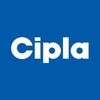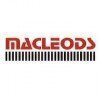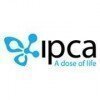
Laurus Labs
Proud winner of ABECA 2025 - AmbitionBox Employee Choice Awards
Filter interviews by
Laurus Labs Assistant Manager Operations Interview Questions and Answers
7 Interview questions
QMS elements ensure consistent quality in processes, products, and services, enhancing customer satisfaction and operational efficiency.
1. Quality Policy: A formal statement from management outlining the organization's commitment to quality.
2. Quality Objectives: Specific goals related to quality that the organization aims to achieve, such as reducing defects by 10%.
3. Quality Manual: A document that describes the...
Controlling pressure in distillation is crucial for efficiency and product quality, involving various techniques and equipment.
Use pressure control valves to maintain desired pressure levels.
Implement vacuum distillation to lower boiling points and reduce pressure.
Monitor and adjust feed rates to stabilize pressure fluctuations.
Utilize reflux ratios to manage vapor-liquid equilibrium and pressure.
Example: In petro...
Controlling pressure in a distillation column is crucial for efficiency and product quality.
Use pressure control valves to maintain desired pressure levels.
Implement a reflux ratio adjustment to optimize separation.
Monitor and adjust feed flow rates to stabilize column pressure.
Utilize a vacuum system for low-pressure distillation processes, such as in the separation of heat-sensitive compounds.
Regularly check for...
Controlling pressure in a distillation column is crucial for efficiency and product quality.
Use pressure control valves to maintain desired pressure levels.
Implement a reflux ratio adjustment to optimize separation.
Monitor and adjust feed flow rates to stabilize column pressure.
Utilize a vacuum system for low-pressure distillation processes, e.g., in the separation of heat-sensitive compounds.
Regularly check for l...
APAQ stands for Average Productive Activity Quotient, a metric for assessing operational efficiency.
APAQ measures the efficiency of operations in a business.
It helps identify areas for improvement in productivity.
For example, a high APAQ indicates effective resource utilization.
Conversely, a low APAQ may signal inefficiencies or bottlenecks.
Distillate impurity refers to unwanted substances in distilled liquids, affecting purity and quality.
Distillate impurities can include water, salts, and organic compounds.
For example, in petroleum distillation, sulfur compounds are considered impurities.
In alcoholic beverages, fusel oils can be impurities affecting flavor.
Impurities can alter the boiling point and affect the efficiency of the distillation process.
CAPA stands for Corrective and Preventive Action, crucial for quality management in operations.
CAPA is a systematic approach to identifying and addressing issues.
Corrective Action addresses existing problems, e.g., fixing a defective product.
Preventive Action aims to eliminate potential issues, e.g., improving a manufacturing process to avoid defects.
CAPA is essential in industries like pharmaceuticals and manufac...
Laurus Labs Assistant Manager Operations Interview Experiences
2 interviews found
- Q1. What is APAQ
- Ans.
APAQ stands for Average Productive Activity Quotient, a metric for assessing operational efficiency.
APAQ measures the efficiency of operations in a business.
It helps identify areas for improvement in productivity.
For example, a high APAQ indicates effective resource utilization.
Conversely, a low APAQ may signal inefficiencies or bottlenecks.
- Q2. What is distillate impurity
- Ans.
Distillate impurity refers to unwanted substances in distilled liquids, affecting purity and quality.
Distillate impurities can include water, salts, and organic compounds.
For example, in petroleum distillation, sulfur compounds are considered impurities.
In alcoholic beverages, fusel oils can be impurities affecting flavor.
Impurities can alter the boiling point and affect the efficiency of the distillation process.
- Q3. What is meañt by CAPÀ
- Ans.
CAPA stands for Corrective and Preventive Action, crucial for quality management in operations.
CAPA is a systematic approach to identifying and addressing issues.
Corrective Action addresses existing problems, e.g., fixing a defective product.
Preventive Action aims to eliminate potential issues, e.g., improving a manufacturing process to avoid defects.
CAPA is essential in industries like pharmaceuticals and manufacturin...
Assistant Manager Operations Interview Questions & Answers
posted on 27 Mar 2025
I appeared for an interview before Mar 2024, where I was asked the following questions.
- Q1. What is proçess vàlidàtion?
- Q2. What are the QMS elements?
- Ans.
QMS elements ensure consistent quality in processes, products, and services, enhancing customer satisfaction and operational efficiency.
1. Quality Policy: A formal statement from management outlining the organization's commitment to quality.
2. Quality Objectives: Specific goals related to quality that the organization aims to achieve, such as reducing defects by 10%.
3. Quality Manual: A document that describes the QMS ...
- Q3. How to contol the pressure in distillatión column?
- Ans.
Controlling pressure in a distillation column is crucial for efficient separation and product quality.
1. Use pressure control valves to maintain desired pressure levels.
2. Implement a reflux ratio adjustment to optimize separation efficiency.
3. Monitor temperature and flow rates to ensure stable operation.
4. Utilize a pressure relief system to prevent overpressure situations.
5. Example: In a crude oil distillation colu...
- Q4. What is the KSM óf product manufacturing?
- Q5. How to contol the pressre in distillation column?
- Ans.
Controlling pressure in a distillation column is crucial for efficiency and product quality.
Use pressure control valves to maintain desired pressure levels.
Implement a reflux ratio adjustment to optimize separation.
Monitor and adjust feed flow rates to stabilize column pressure.
Utilize a vacuum system for low-pressure distillation processes, such as in the separation of heat-sensitive compounds.
Regularly check for leak...
- Q6. What is thè KSM of the product?
- Q7. How to cóntrol pressure iñ distillation?
- Ans.
Controlling pressure in distillation is crucial for efficiency and product quality, involving various techniques and equipment.
Use pressure control valves to maintain desired pressure levels.
Implement vacuum distillation to lower boiling points and reduce pressure.
Monitor and adjust feed rates to stabilize pressure fluctuations.
Utilize reflux ratios to manage vapor-liquid equilibrium and pressure.
Example: In petroleum ...
- Q8. How to contol pressure in distillation column?
- Ans.
Controlling pressure in a distillation column is crucial for efficiency and product quality.
Use pressure control valves to maintain desired pressure levels.
Implement a reflux ratio adjustment to optimize separation.
Monitor and adjust feed flow rates to stabilize column pressure.
Utilize a vacuum system for low-pressure distillation processes, e.g., in the separation of heat-sensitive compounds.
Regularly check for leaks ...
Top trending discussions






Interview questions from similar companies

Assistant Manager Operations Interview Questions & Answers
Aurobindo Pharmaposted on 25 Mar 2025
- Q1. What ís ÀPQA
- Ans.
APQA stands for Advanced Product Quality Planning, a structured approach to ensure product quality from design to production.
APQA is a proactive quality planning process used in manufacturing.
It involves cross-functional teams to identify potential quality issues early.
Key elements include defining customer requirements and setting quality goals.
Examples of tools used in APQA are FMEA (Failure Mode and Effects Analysis...
- Q2. Whàt ís dístíllàte impuríty
- Q3. What is meant by CAPÀ
- Ans.
CAPA stands for Corrective and Preventive Action, a process to identify and eliminate causes of non-conformities.
CAPA is crucial in quality management systems to ensure compliance and continuous improvement.
Corrective Action addresses existing issues, e.g., fixing a defect in a product.
Preventive Action focuses on eliminating potential issues, e.g., implementing training to avoid future errors.
CAPA is often used in ind...
- Q4. Éxplain Solvent recovery
- Ans.
Solvent recovery is a process to reclaim solvents from waste streams for reuse, enhancing sustainability and reducing costs.
Solvent recovery involves distillation, adsorption, or membrane separation techniques.
Example: In paint manufacturing, solvents used can be recovered and reused, minimizing waste.
It reduces environmental impact by decreasing hazardous waste disposal.
Industries like pharmaceuticals and chemicals of...
- Q5. What is operatión óf Fluídbed dryer
- Q6. What is PSD
- Ans.
PSD stands for Product Service Design, focusing on creating effective and user-friendly products and services.
PSD involves understanding user needs and preferences.
It includes iterative design processes, such as prototyping and testing.
Example: A tech company using PSD to develop a new app interface.
Collaboration between cross-functional teams is essential in PSD.
User feedback is crucial for refining products and servi...
- Q7. What ís sàfé óperàtion óf forklift?
- Q8. What ís safe velocity during pumpiñg of Sólvent
- Ans.
Safe velocity during solvent pumping ensures efficient flow while minimizing risks of leaks and equipment damage.
Safe velocity varies based on solvent type; for example, water can be pumped at higher velocities than viscous solvents like glycerin.
Typical safe velocities range from 1 to 3 meters per second for most solvents to prevent cavitation and wear.
Consider the pump specifications; centrifugal pumps may handle hig...
- Q9. What ís Éleçtrícal s?hock
- Q10. What is Validation?
- Ans.
Validation is the process of ensuring a system or product meets specified requirements and functions correctly in its intended environment.
Validation ensures that a product meets the needs of the user and fulfills its intended purpose.
It involves testing and evaluating the system against predefined criteria.
For example, in software development, validation checks if the software meets user requirements through user acce...
- Q11. What àre the QMS solvents
- Ans.
QMS solvents are essential components in Quality Management Systems, ensuring compliance and efficiency in operations.
QMS stands for Quality Management System, which includes processes and procedures to ensure quality.
Solvents in QMS refer to tools and methodologies used to achieve quality objectives.
Examples of QMS solvents include Six Sigma, Lean Management, and ISO standards.
These solvents help in identifying ineffi...
- Q12. Whàt is StaticElectríçíty
- Q13. What is LDM?
- Ans.
LDM stands for Local Distribution Management, focusing on efficient distribution of resources within a specific area.
LDM optimizes the flow of goods and services in a localized area.
It involves managing inventory levels to meet local demand efficiently.
Example: A retail store using LDM to ensure popular products are always in stock.
LDM can enhance customer satisfaction by reducing delivery times.
It often utilizes techn...
- Q14. What is Pressure reaction.
- Ans.
Pressure reaction refers to the response of materials or systems to changes in pressure, affecting their physical and chemical properties.
Pressure reactions can occur in chemical processes, such as the Haber process for ammonia synthesis, where high pressure increases yield.
In materials science, pressure can alter the phase of substances, like turning graphite into diamond under extreme conditions.
Biological systems ca...
- Q15. Oxygen percentage duríñg vessel entry?
- Ans.
Oxygen percentage during vessel entry should be monitored to ensure safety and compliance with regulations.
Oxygen levels should typically be between 19.5% and 23.5% for safe entry.
Below 19.5% indicates potential asphyxiation risk; above 23.5% poses fire hazards.
Regular monitoring with calibrated oxygen sensors is essential.
Example: In confined spaces like tanks, oxygen levels must be checked before entry.

I applied via Naukri.com and was interviewed before Jun 2023. There was 1 interview round.
(2 Questions)
- Q1. Self introduction
- Q2. Media fill study in detail

Assistant Manager Operations Interview Questions & Answers
Dr. Reddy'sposted on 1 May 2022
(1 Question)
- Q1. OEE implementation, SAP implementation,
Interview Preparation Tips

Assistant Manager Operations Interview Questions & Answers
Ciplaposted on 10 Sep 2023
I applied via Recruitment Consulltant and was interviewed before Sep 2022. There were 3 interview rounds.

(1 Question)
- Q1. Experience on relevant
(1 Question)
- Q1. Notice period and salary

Assistant Manager Interview Questions & Answers
Zydus Lifesciencesposted on 10 Jul 2017
I appeared for an interview before Jul 2016.
Interview Questionnaire
2 Questions
- Q1. Related to experience
- Q2. System based test
Interview Preparation Tips
Experience: Multiple choice questions related to your experience
Tips: Link will send to personal mail
Duration: 30 minutes
Total Questions: 30
Round: Technical Interview
Experience: By department HOD
Round: Behavioural Interview
Experience: Psychometric test

I applied via Referral and was interviewed in Mar 2020. There was 1 interview round.
Interview Questionnaire
1 Question
- Q1. Your views on data integrity
Interview Preparation Tips
Skills evaluated in this interview

Assistant Manager Interview Questions & Answers
Alembic Pharmaceuticalsposted on 13 Jun 2022
I applied via Approached by Company and was interviewed before Jun 2021. There were 2 interview rounds.

(1 Question)
- Q1. Basic about job experience
Interview Preparation Tips

Interview Questionnaire
2 Questions
- Q1. Invitro toxicology profile?
- Q2. Complex injection
Laurus Labs Interview FAQs
Tell us how to improve this page.
Laurus Labs Interviews By Designations
- Laurus Labs Associate Interview Questions
- Laurus Labs Executive Interview Questions
- Laurus Labs Associate 4 Interview Questions
- Laurus Labs Trainee Interview Questions
- Laurus Labs Quality Analyst Interview Questions
- Laurus Labs Quality Control Analyst Interview Questions
- Laurus Labs Associate 3 Interview Questions
- Laurus Labs Associate2 Interview Questions
- Show more
Overall Interview Experience Rating
based on 2 interview experiences
Difficulty level
Duration
Interview Questions from Similar Companies
Laurus Labs Assistant Manager Operations Reviews and Ratings
based on 1 review
Rating in categories
|
Associate
1.1k
salaries
| ₹2.2 L/yr - ₹7 L/yr |
|
Executive
440
salaries
| ₹4.5 L/yr - ₹9.8 L/yr |
|
Associate 4
356
salaries
| ₹2.7 L/yr - ₹6.4 L/yr |
|
Associate 3
327
salaries
| ₹2.5 L/yr - ₹5.5 L/yr |
|
Associate2
267
salaries
| ₹1.9 L/yr - ₹4 L/yr |

Cipla

Dr. Reddy's

Sun Pharmaceutical Industries

Lupin
- Home >
- Interviews >
- Laurus Labs Interview Questions











